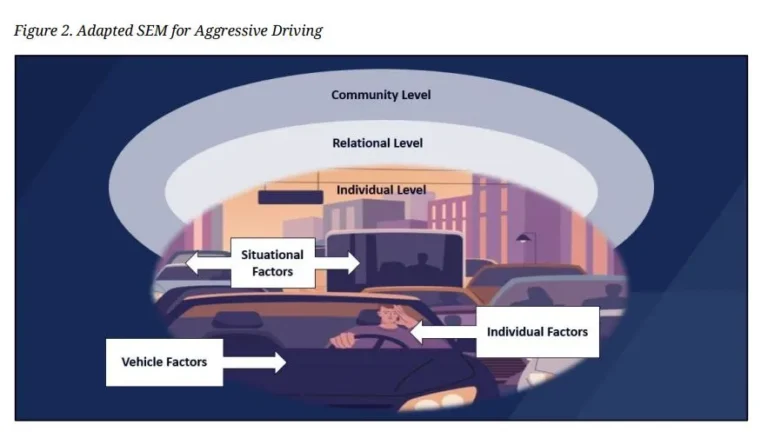Road rage and aggressive driving is no longer the exception, it’s the norm, discovered the AAA.
Road rage, or aggressive driving, has become a growing problem in recent years, to the point that it seems many drivers navigate streets and highways in a negative emotional state. It’s a phenomenon that spreads easily, affecting both those who experience it and those who witness it. In response to this growing concern, the AAA Foundation for Traffic Safety conducted a study to examine how many drivers are influenced by road rage.
The report revealed that a surprising 96% of drivers admitted to engaging in aggressive behaviors behind the wheel over the past year. These behaviors range from speeding and tailgating to cutting off other drivers. In other words, aggressive driving has become an almost universal experience: not only is it frustrating, but it also appears to be contagious.

Road rage: an increasingly common and contagious phenomenon
“Aggressive driving and road rage are serious threats to public safety and contribute significantly to the number of crashes each year,” the AAA stated in its report. While the Foundation had previously conducted studies on this issue, the latest analysis, conducted in 2025, revealed a troubling trend: the more drivers are exposed to aggressive behavior on the road, the more likely they are to mirror it.
This cycle of aggression creates a driving culture built on impatience and hostility, where aggressive driving is no longer the exception, it becomes the norm.
The study identified several levels of influence that help explain why drivers engage in aggressive behavior:
- Individual level: knowledge, skills, personal attitudes.
- Relational level: influence from family, friends, and social networks.
- Community level: the built and social environment.
In addition, the report emphasizes that aggressive driving isn’t always driven solely by anger. Emotions such as fear and anxiety also play a significant role. One act of aggression can trigger fear in another driver, who then responds with similarly aggressive behavior. In short, road rage behaves like a contagious phenomenon, quickly spreading across roadways and reinforcing a dangerous, reactive driving culture.

92% of drivers engage in road rage
Among the key findings of the study, 92% of drivers surveyed admitted to engaging in aggressive behaviors that endanger traffic safety. These actions include speeding, cutting off other vehicles, failing to use turn signals, tailgating, frequent horn use, and more.
But the numbers don’t stop there. AAA also reported that 11% of respondents admitted to violent behaviors behind the wheel, such as intentionally ramming another vehicle or physically confronting another driver, escalating road rage to a level rarely documented before.
The study also found that the type of vehicle driven influences driver behavior. In other words, the car one drives can be an indicator of both how they behave on the road and how they are perceived by others. Notably, drivers of sports cars, large trucks, and motorcycles are often seen as more aggressive. This perception was confirmed by testimonies from drivers who said they feel more powerful and dominant when driving these types of vehicles.
AAA’s top three tips for managing road rage
Road rage is spreading at an alarming rate, making it urgent to implement effective measures to mitigate its impact. In the meantime, each driver has a personal responsibility to manage their emotions and minimize any displays of aggression behind the wheel. To help with this, AAA offers the following recommendations:
- Breathe before you react: a deep breath can reset your mood behind the wheel.
- Don’t take the bait: ignore and avoid aggressive drivers.
- Choose time over tension: leave early, keep your distance, and arrive safely.

Women’s safety in the transport sector: urgent priorities
International Day for the Elimination of Violence against Women is observed today, November 25. International Day for the Elimination of Violence against Women is observed

Federal CDL policies linked to thousands of lost trucking jobs
Federal government measures regarding CDLs and English-language proficiency requirements have resulted in the loss of thousands of jobs in the trucking industry. Federal government measures

Thanksgiving 2025: Weather and Road Conditions Across the U.S.
Thanksgiving 2025: What Truckers Need to Know About Weather and Road Conditions Across the U.S.

Comprehensive Guide to the New Federal Rule for Accessing CDL Licenses
The federal government has redefined who can apply for, renew, or retain a Commercial Driver’s License (CDL), introducing new restrictions for migrants and issuing direct

What drivers want: more mileage, more pay
The results of the annual Commercial Carrier Journal survey, conducted in collaboration with Netradyne, “What Drivers Want,” have now been published. The results of the

U.S. Unveils 1st Female Crash-Test Dummy, Sparking Debate: Are Accidents Different for Men and Women?
The new THOR-05F marks a milestone: for the first time, a crash-test dummy accurately reflects the female anatomy. Officials argue that decades of safety testing based on male-bodied models left women more vulnerable to severe injuries. The announcement aligns with the administration’s broader push to reintroduce biological sex classifications in medical and safety policy.
All content and original artwork, unless otherwise noted, is protected by copyright. Saint George uses certain images under license from various licensing vendors for this purpose. Any unauthorized commercial reproduction or distribution of copyrighted materials is prohibited.
